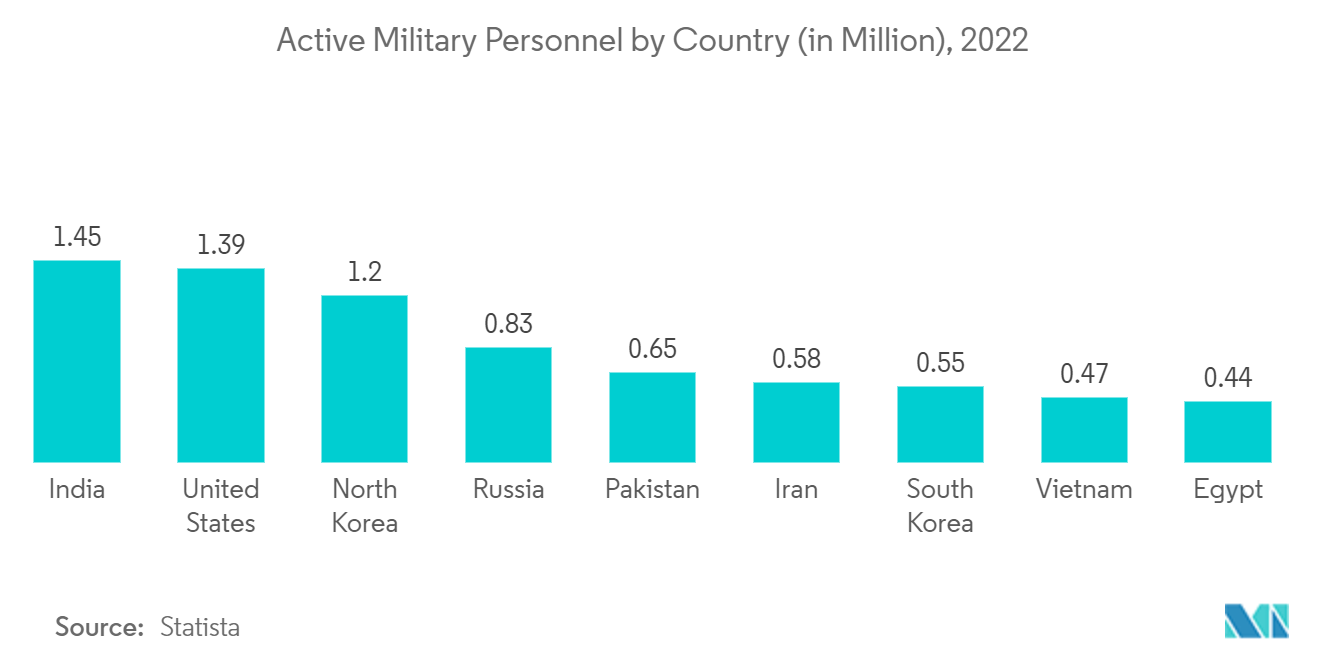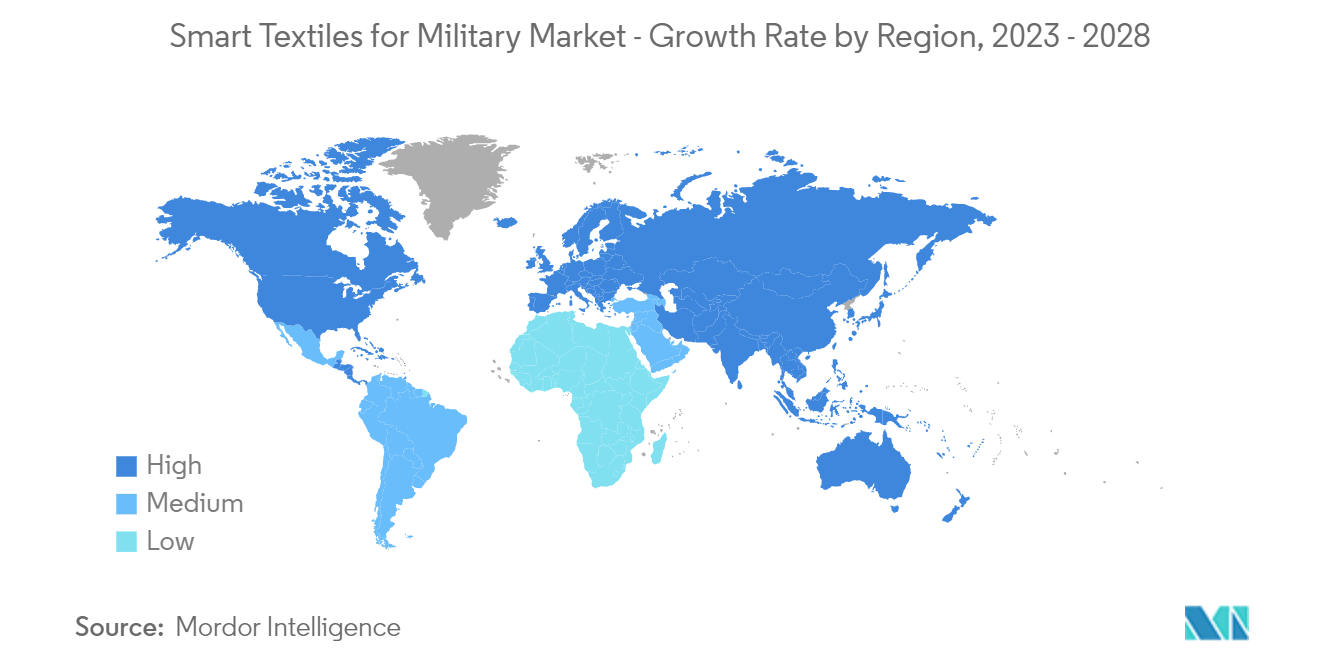Market Trends of Smart Textiles For Military Industry
Health Monitoring and Diagnostics Segment to Dominate the Market
The health monitoring and diagnostics segment is projected to lead the market during the forecast period. An increase in defense expenditure and a rising focus on improving soldiers' security drive the growth of the market. The operation of military personnel in harsh terrains for extended tenure necessitates protection from elements and battle hazards. Biological and chemical agents continue to pose severe threats because of their overall defensive and offensive potential. Recently, the threat of bioterrorism increased due to concerns that non-state armed actors, such as terrorists and militia groups, could use biological agents to target air and water sources, food supplies, and other vital infrastructures.
Additionally, integrating IoT sensors in smart clothes to determine the presence and level of hazardous gas in the environment allows the military to efficiently mitigate the harm caused by dangerous gases. Acellent Technologies Inc., a US company, in collaboration with the US Army, developed the SmartArmor system for the in-service monitoring of the health of body armor structures. The system was designed to monitor personal body armor comprising an intelligent layer and software to increase the safety of soldiers in a combat zone.
Furthermore, as of May 2022, researchers in the US worked on wearable gas sensors integrated with uniforms. The flexible, porous, and susceptible nitrogen dioxide sensors for military applications monitor the soldier's health and safety on the battleground or in case of hazardous gases.
In December 2022, the US Army selected 24 small companies to develop advanced wearable technologies to address current and future warfighting needs. These companies each will receive USD 150,000 as Phase I Small Business Innovation Research contracts. It is for developing a device capable of sensing and monitoring real-time physiological data to assess warfighter's health and readiness. Several technologically advanced product research and developments are expected to drive this market segment at significant growth rates during the forecast period.

The Asia-Pacific Region is Expected to Witness Significant Growth During the Forecast Period.
The Asia-Pacific region is poised to lead the market due to increasing defense budgets, geopolitical tensions, and a growing focus on soldier safety and performance. The region's rapid technological advancements, string textile manufacturing base, and collaborative efforts also contribute to its dominance in adopting and developing innovative smart textile solutions for military applications. Moreover, some countries in the region are emphasizing domestic production and self-sufficiency in critical defense technologies, driving local research, development, and adoption of homegrown smart textile solutions.
In May 2022, Soliyarn, Inc. signed a deal with Huvis Global, a South Korean fiber manufacturing giant, and the Commonwealth of Massachusetts, M2I2 Manufacturing Grant program to close a round of funding for USD 7.7 million. It will lay the groundwork for a research & development and production facility to manufacture smart textiles at scale.
For instance, in September 2022, the Indian Institute of Technology (IIT) announced they signed a memorandum of understanding with Troop Comforts Limited (TCL), an enterprise of India's government for developing Smart Protective Clothing for the Indian security forces.
In May 2022, the Australian Department of Defense started the rollout of the Royal Australian Navy's new maritime uniform. This uniform was developed by partnering with Workwear Group, Melbourne, and Bruck Textiles Group and is incorporated with inherent fire-retardant properties within the fabric. Nevertheless, the growth in research activities to develop smart textiles for the militaries of countries like India, Japan, and others is expected to drive market growth during the forecast period.


